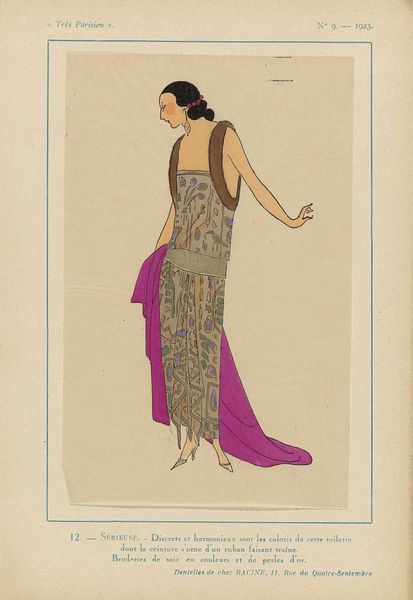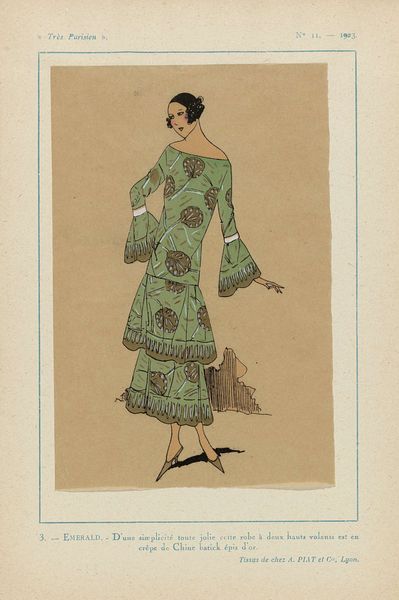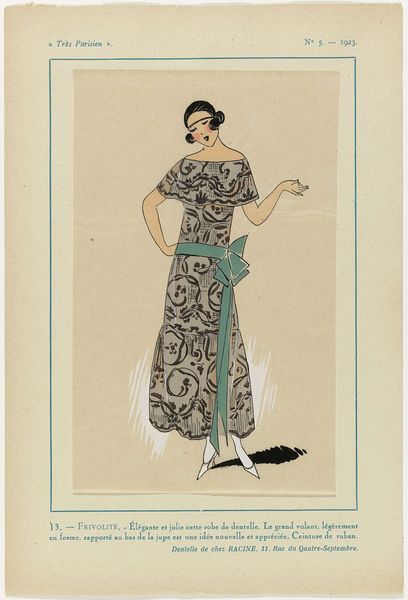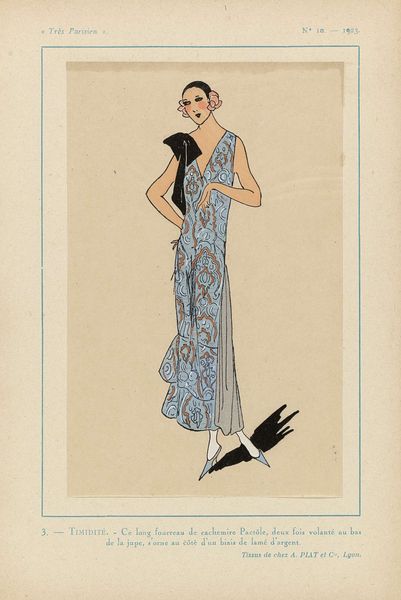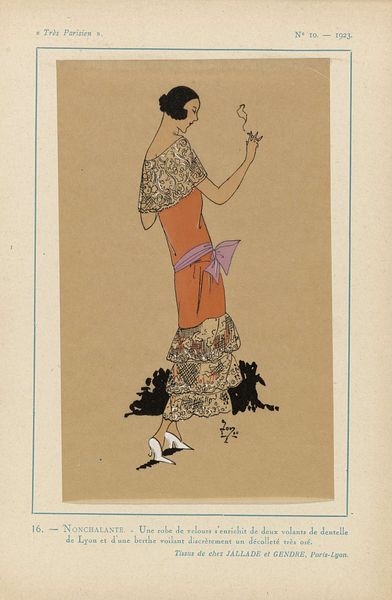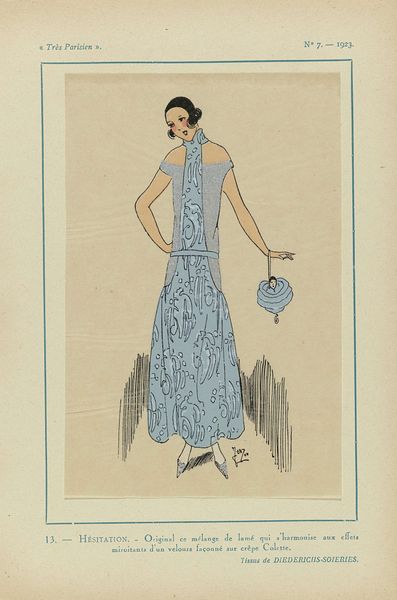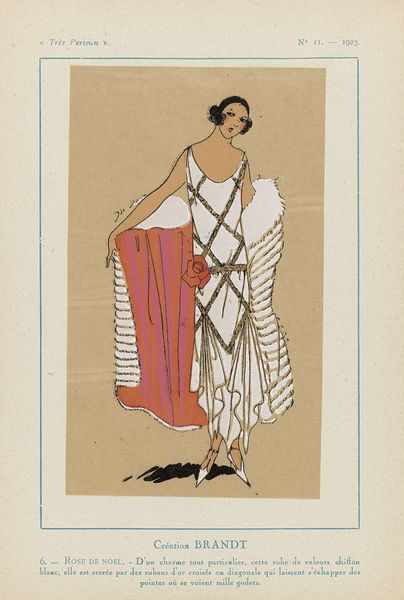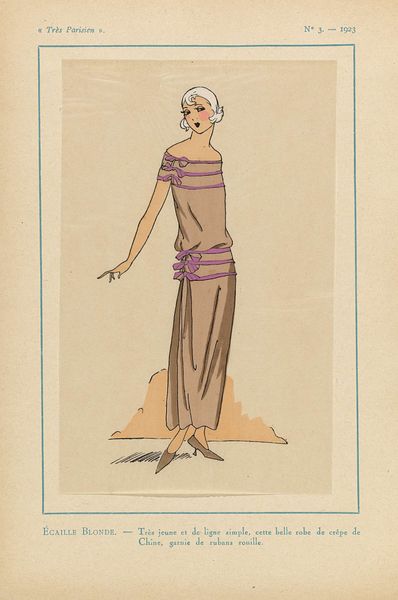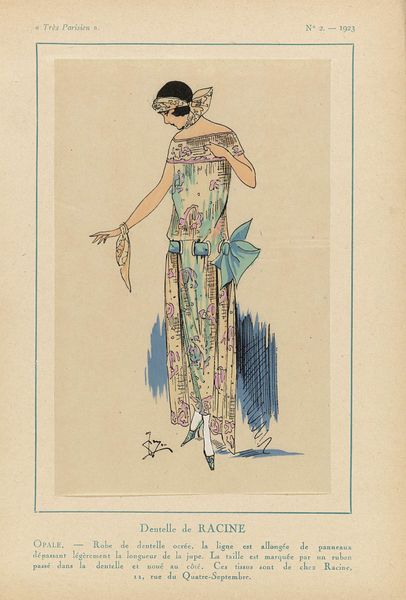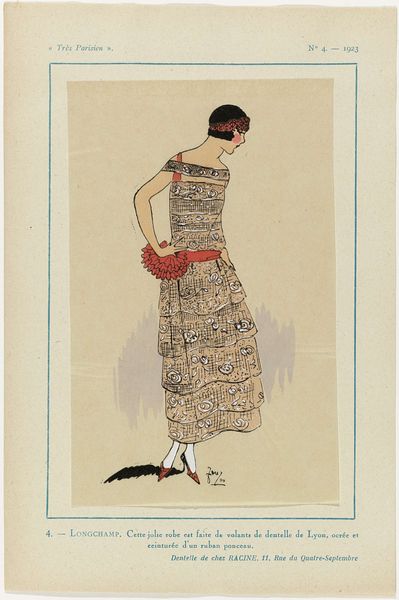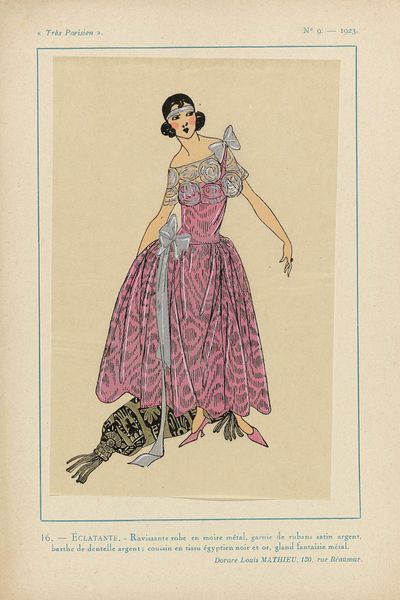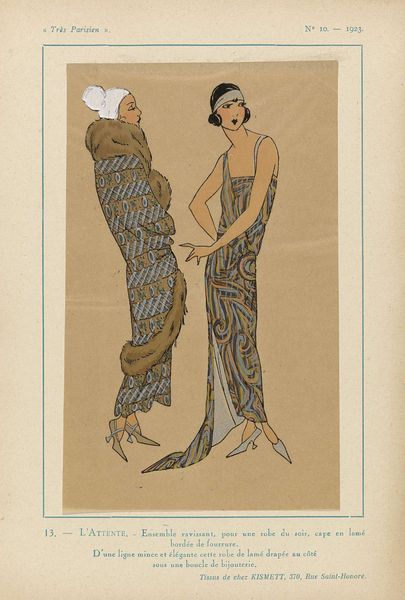
Très Parisien, 1923, No 11: 14. - LAQUE DE CHINE. - Charmante est cette toilette... 1923
0:00
0:00
drawing, paper, pen
#
art-deco
#
drawing
#
paper
#
historical fashion
#
intimism
#
pen
Dimensions: height 269 mm, width 180 mm
Copyright: Rijks Museum: Open Domain
Editor: This drawing from 1923, titled "Très Parisien, No 11: 14 - LAQUE DE CHINE" by an anonymous artist at the Rijksmuseum, it’s crafted with pen on paper. It's very delicate and fashionable but what strikes me most is the rendering of what seems to be an exquisite dress with lacquered details. How do you see this artwork? Curator: Well, immediately I'm drawn to the material processes implied. The title references 'Laque de Chine', drawing our attention to the history of Chinese lacquerware and its appropriation into Western design. We see that 'crêpe de Chine' is named as the dress fabric. How interesting is it to think about the artist is thinking about how clothing, a mass-produced item even in 1923, intersects with notions of craft and cultural exchange? What statement do you think it's trying to make? Editor: I suppose it highlights how global trade and technological advances blur those lines? It seems to romanticize the labour behind it, in a way? Curator: Precisely. Consider the artist's hand involved in replicating what the inscription declares, a machine embroidered textile produced and sold by Racine... Doesn't the image subtly foreground the social and economic relationships embedded in something as seemingly simple as a fashionable dress? Editor: So, it's about elevating our consideration of material production and challenging those high art/craft boundaries through a commodity such as the dress depicted. Curator: Exactly! By dissecting the processes, from the craft implied to the commodity advertised, we uncover a network of social exchanges. Hopefully, that enhances our experience of this art! Editor: This has definitely highlighted the rich cultural and economic exchanges involved. Thanks for illuminating this.
Comments
No comments
Be the first to comment and join the conversation on the ultimate creative platform.
